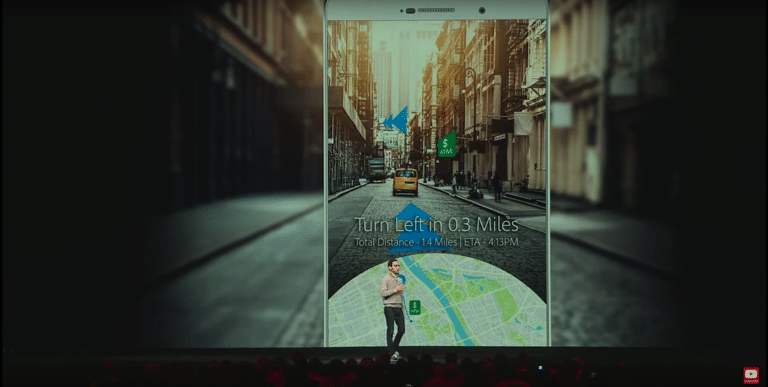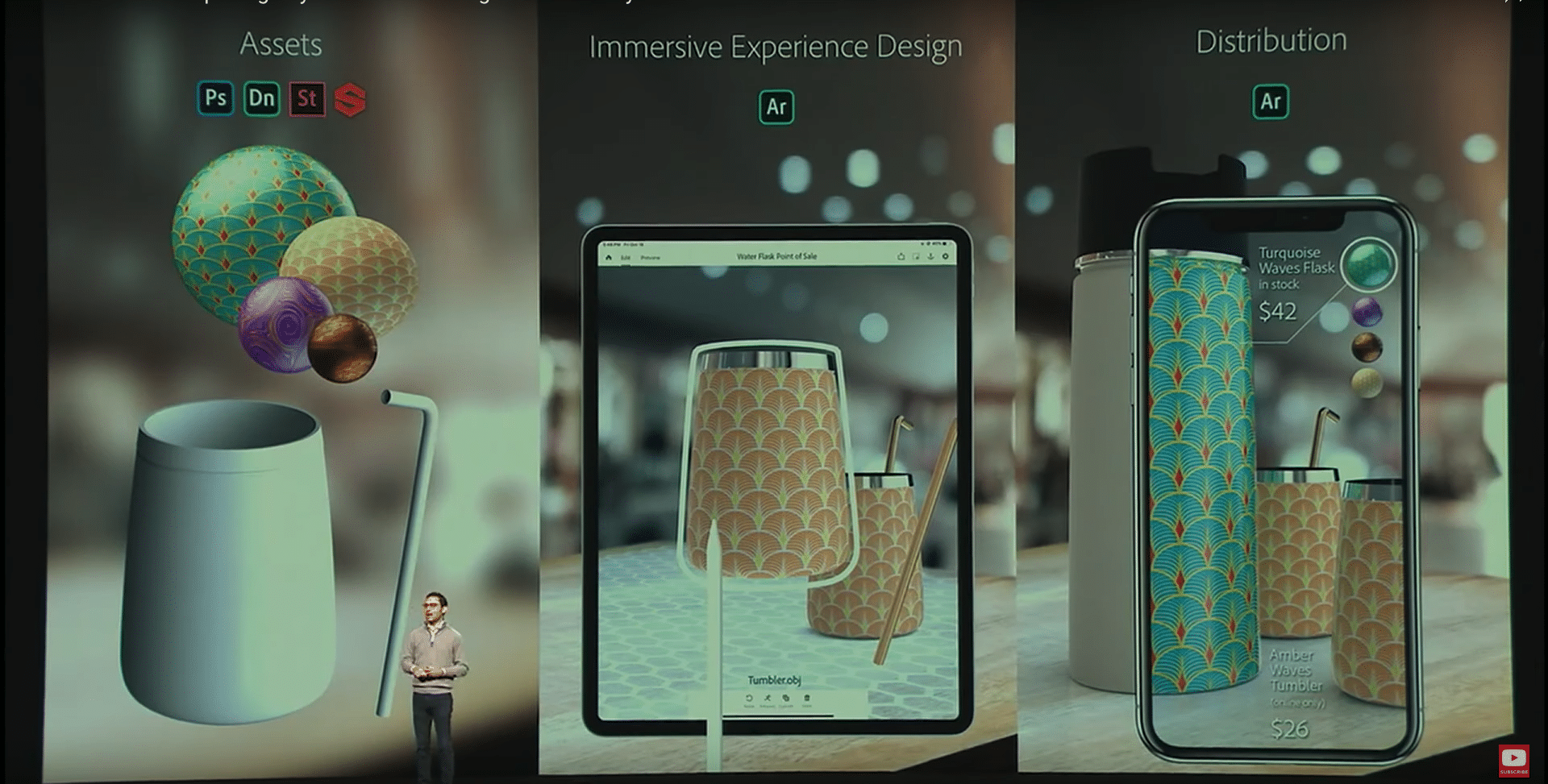
XR Talks is a series that features the best presentations and educational videos from the XR universe. It includes embedded video, as well as narrative analysis and top takeaways. Speakers’ opinions are their own. For a deeper indexed and searchable archive, subscribe to ARtillery PRO.
AR Insider readers know that one of our favorite topics in the spatial computing spectrum is “building blocks” for AR creation. These lower barriers and democratize advanced AR development by demystifying it with intuitive software. Examples include Amazon Sumerian and Unity.
But the biggest “sleeper” among these tools could be the hotly-anticipated Adobe Aero. That’s not only because it brings Adobe’s aptitude for creative tools, but because it’s embedded right within the workflow of its prolific Creative Cloud. That means bringing AR to where creative pro’s live.
We say “sleeper” and “hotly-anticipated” because Aero was previously available on a limited basis. This week Adobe launched the full-fledged Aero for creative professionals at its Max event, and spent some quality time in the opening keynote to characterize its features (video below).

Notably, Aero represents Adobe’s dedicated AR play but it’s not a standalone effort. Just like the rest of the Creative Cloud, it integrates across apps like Photoshop and Premiere. It also wants to go beyond a creation tool and provide the means to publish and distribute those creations.
It does this by working with prevalent AR formats and platforms. This will start with the USDZ format that’s used by Apple’s ARkit and its Quick Look web AR feature. This embeds 3D and AR product renderings into websites for things like eCommerce product visualization.
Altogether, Adobe wants to provide a holistic production and distribution flow for AR. That not only lowers barriers to adoption with an easy “one-stop-shop” for creators, but it intelligently positions Adobe to own more of the creative process, where it derives a primary revenue stream.
“Creation for AR is very new, so let’s take it step by step,” said Adobe’s Scot Belsky. “It all starts with acquiring assets. These can be Photoshop files that you make or get from someone else. They can be 3D objects or stock that you customize… or you can create assets using a 3D modeling tool. Once you have the assets, you’re going to want to design an immersive experience. This involves assigning immersive behaviors, triggers and actions to everything in a scene using Aero… Finally, you’ll want to distribute this immersive experience that you have designed. It could be a game, a link to a friend or some augmented reality platform.”

To demonstrate, Adobe’s Chantel Benson walked through a creation process in Aero. By pulling in a few graphical assets from Photoshop, she was able to construct a scene on the fly. In this case, it was a 3D tropical landscape that spotlights a rare bird for a hypothetical AR educational app.
This involves a few steps to compose a scene, then animate specific elements in a pre-defined and choreographed way. That 3D animated scene can then be exported to various AR platforms so that end users can place the scene in their immediate space using an AR compatible device.
Again, a key principle is integrating with, and pull assets from, other Creative Cloud programs like Photoshop. That makes Aero natively compatible with Photoshop paradigms like “layers.” Because creative professionals already know these languages and interactions, it should acclimate easily.
“Let’s do something with this [Photoshop] file,” she said. Aero knows that it has layers and I can expand the space between them. What’s really exciting is that I’m creating for AR in AR, so I get a wonderful understanding of what my viewer will look at in the experience…This is a direct simulation of how a viewer will engage on their own device and understand that they can walk into it and get that nice parallax effect.”

Aero notably lets creators design AR while in AR on an iPad as Benson notes. That makes it a lot more intuitive through a direct feedback loop for rapid prototyping. Intuitiveness is also bred through common gestural languages that everyone knows, such as pinching, dragging, etc.
“You’ll notice as I put the scene together, I’m just using normal everyday gestures,” she said, “to rotate and scale and place these objects in place. It’s the same types of gestures I use with my smart device, so if you have a smart device you can use Aero… I just created a whole new AR experience and I can publish the whole thing directly from the Aero app.”
The clear theme that Adobe is emphasizing in Aero’s product design is that AR needs to be easy to create and integrate with existing workflows. This is a smart approach in early days of AR when there’s lots of adoption and creation friction. Reducing that friction is the name of the game.
This is also important because the Creative Cloud’s community of designers are AR’s potential harbingers. These are the designers working in-house studios, brand marketers or creative agencies. They can accelerate AR’s cultural acceptance by building compelling experiences.
“I believe we are in the golden age of 3D immersive content, said Adobe’s Substance division lead, Sebastian DeGuy. “What we need now is more great content to empower artists. This is exactly what we are doing with Substance, Aero, Dimension and with more to come.”
See the full talk below, coded to start at the right segment of the Adobe Max keynote.
For deeper XR data and intelligence, join ARtillery PRO and subscribe to the free AR Insider Weekly newsletter.
Disclosure: AR Insider has no financial stake in the companies mentioned in this post, nor received payment for its production. Disclosure and ethics policy can be seen here.
Header image credit: Adobe
